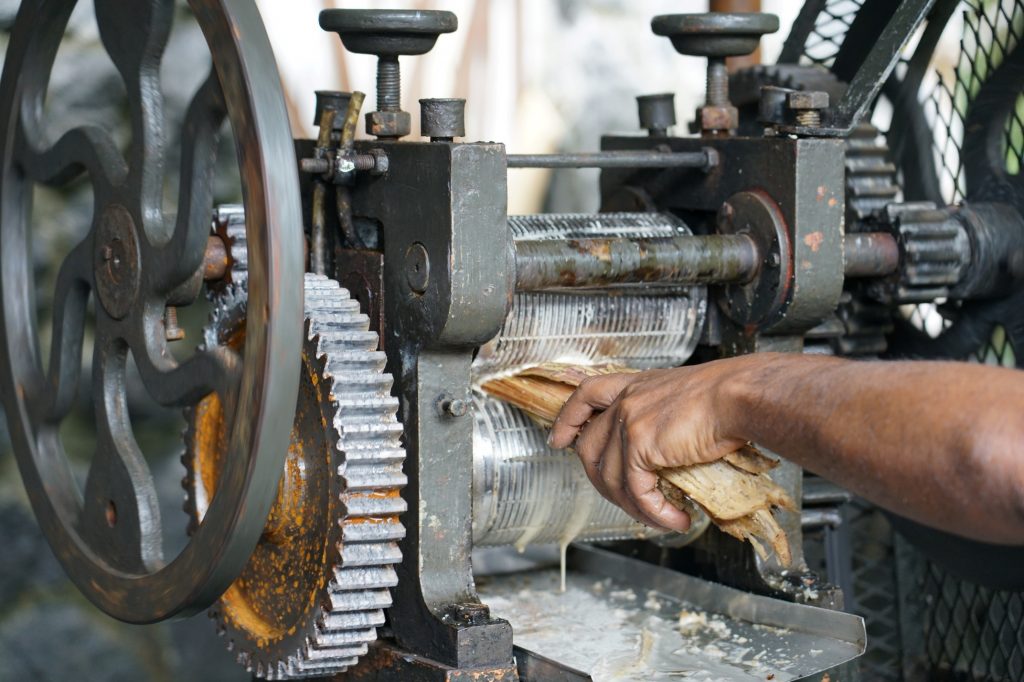It’s no surprise that reducing sugar consumption is a global focus, but did you know that reducing sugar consumption can also be linked to sustainability improvements? Sugar production can have an adverse impact on the environment in many ways, so reducing consumption can also promote sustainability.

Sugar reduction for health – how much should we reduce sugar intake, and why?
High sugar intake is known to increase a person’s risk for heart disease, type two diabetes, and obesity. Sugar-sweetened beverages have been a primary target of tax legislation in many countries due to their high calorie and sugar content. Additionally, there is a strong link between sugar intake and dental caries, or more commonly known as tooth decay or cavities. Dental caries develop when bacteria in the mouth metabolizes sugar left on teeth which produces acid that then breaks down the enamel and dentine on the tooth. It has been estimated that, globally in 2010, US$ 298 billion was spent on direct costs associated with dental caries (WHO).
Therefore, the World Health Organization recommends reducing free sugar intake for both children and adults to under 10 percent of total daily calories, equivalent to around 50 grams of free/added sugar maximum for the average person per day.
Sugar reduction and sustainability
Environmental impact of sugar production
Sugar is a major industry with significant effects on the global environment resulting from growing, harvesting, refining, and distribution. On average, sugarcane accounts for nearly 80% of global sugar production, with some 110 countries currently producing sugar from either cane or beets. For the period October/ September 2019, the top 10 producing countries (India, Brazil, Thailand, China, the US, Mexico, Russia, Pakistan, France, and Australia) accounted for nearly 70% of global output, with more than 170 million tonnes consumed annually (International Sugar Organisation). The production of sugar is a highly water intensive operation, especially from sugar cane which has deep roots.
According to a recent sugar life cycle analysis and report conducted by Kerry, manufacturing 1kg of cane sugar uses 1,110 liters of water and leads to 0.42kg of CO2 emissions. For the case of beet sugar, it would require 640 liters of water and emit 0.85kg of CO2e (LCA).
The increase in global demand for sugar is resulting in high water consumption, air and water pollution, soil degradation, and change in natural habitat. It is estimated that 10% of soil is lost during harvest of beet sugar and 3-5% of soil in sugar cane harvest. This has resulted in the clearing of natural habitats such as rain forests, coastal wetlands, and savannah (WWF Action for Sustainable Sugar).

What does the global supply chain need to consider to support sugar reduction? In this report, the World Health Organization proposes answers to questions like:
• What are the incentives and disincentives for industry to reduce the amount of sugar in manufactured food and drink products?
• At what point along the supply chain do these incentives and disincentives operate?
• Are there opportunities to effectively enhance the incentives and/or lessen the disincentives for reducing sugar?
How can sugar use be reduced? The landscape of sugar alternatives
It’s not always easy to reduce sugar because of its taste and functional purposes. Sugar plays many functional roles in food and beverage products apart from sweetness. The baking industry relies on sugar to make bread rise when it goes through a fermentation process with yeast. It is also used as a bulking agent in other baking applications where yeast isn’t present. From a molecular standpoint, sugar will bind with water which is used for both shelf life preservation as well as melting or freezing point requirements.
As a result, there is no substitute for sugar in the market that is a one-for-one replacement. However, two common alternatives that can improve nutrition and also improve sustainability metrics are flavourings with modifying properties (FMPs) and stevia.

Flavouring with modifying properties (FMPs)
Another example in the market used to replace sugar is flavouring with modifying proprieties (FMP). As called out in the name, this option can often be labeled as Natural Flavouring in applications. FMPs can be used at low quantities as well to replace large amounts of sucrose. This option is seen as a more nutritious and sustainable alternative to sugar, while also being clean label. To put the nutrition piece into perspective, let’s look at an example of removing 30% of the sugar used in all European full sugar Cola beverages and replacing with FMPs. This would be the equivalent of removing 68 billion sugar cubes, the equivalent of 1,200 billion hours of cycling worth of calories. From a sustainability standpoint, the amount of sugar removed is the equivalent of 29,800 cars driven for one year and the amount of water used for 11 billion people’s annual showers (EPA).
Stevia
Stevia can be up to 300 times more sweet than sucrose, meaning you can replace 100g of sucrose with 1/3g of stevia (Pure Circle Stevia Institute). The overall caloric impact of stevia into an application is negligible due to the small quantity used. The main compound found in stevia leaves imparting sweetness is called steviol glycosides and can come in many different varieties. Stevia’s effectiveness at adding sweetness plateaus after 200 ppm because at this level you will start to perceive bitterness and off-notes. Since you require less stevia leaves versus sugar to provide the same level of sweetness, stevia is the more sustainable option as it would require less land and water to grow and result in lower manufacturing emissions.

 Ben is currently part of the strategic marketing team at Kerry, supporting new innovation within Taste. Prior to this, he held several roles within procurement where he implemented strategies to help enable safe and efficient supply chains. He received his Bachelor’s degree in food science from Cornell University in 2014.
Ben is currently part of the strategic marketing team at Kerry, supporting new innovation within Taste. Prior to this, he held several roles within procurement where he implemented strategies to help enable safe and efficient supply chains. He received his Bachelor’s degree in food science from Cornell University in 2014.  Massimo has over 30 years of experience in the food industry in the areas of R&D team management, flavour creation, development of research strategy for innovation in flavour chemistry, natural processes ideation and industrialisation. Massimo is co-author of 45 scientific papers and 9 patents and a member of the Board of the European (EFFA) and Italian (AISPEC) Flavour Companies Associations.
Massimo has over 30 years of experience in the food industry in the areas of R&D team management, flavour creation, development of research strategy for innovation in flavour chemistry, natural processes ideation and industrialisation. Massimo is co-author of 45 scientific papers and 9 patents and a member of the Board of the European (EFFA) and Italian (AISPEC) Flavour Companies Associations. 